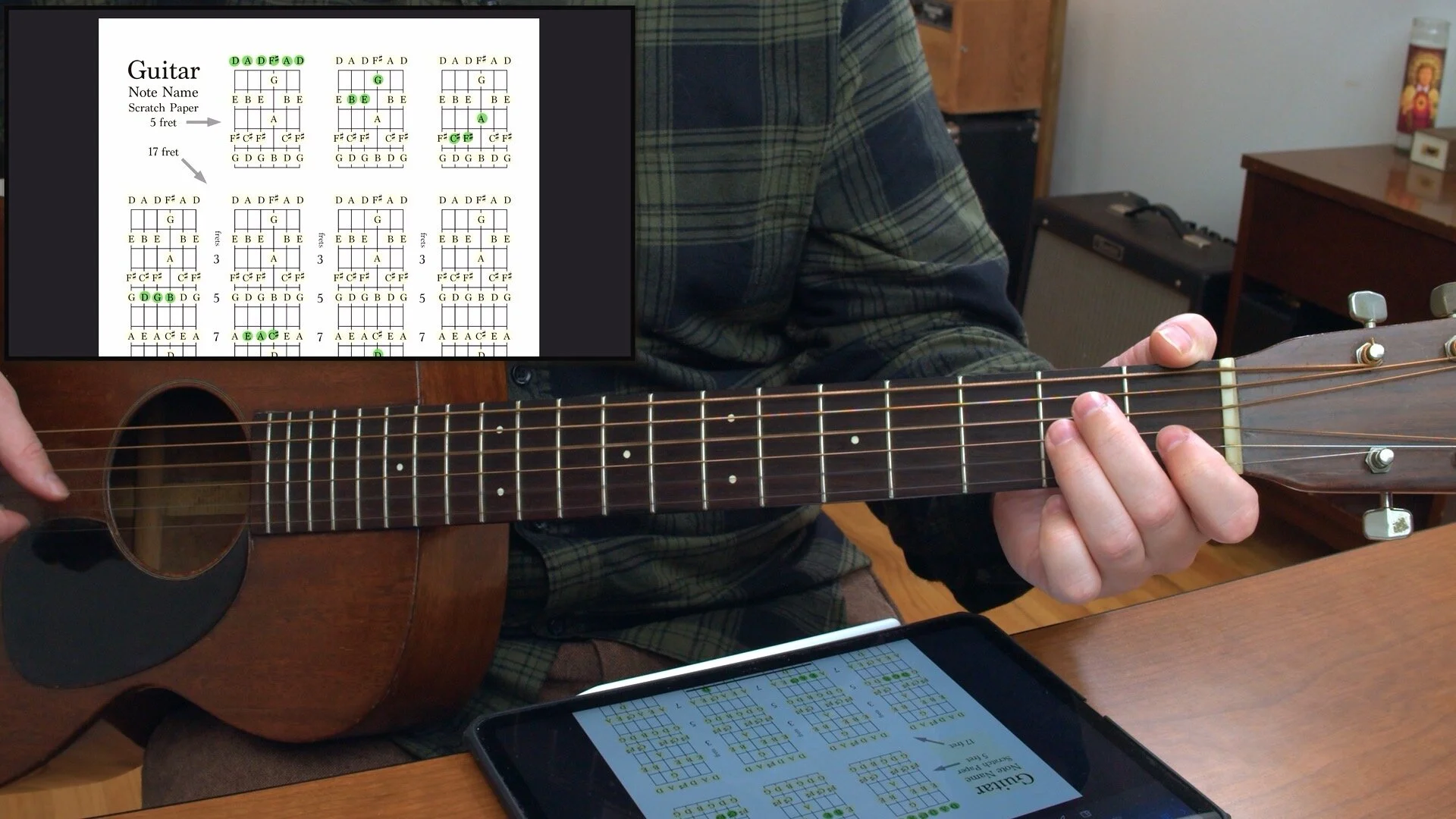Office Hours, Q&A
Question 1: Dennis asked about some "diads" or two note chords, specifically about the blues in this case. We talked about how when you're in a band, you don't always need to play ever note in a chord because other folks in the band are likely doing it already. Also, we got specifically into this cool weird thing about the blues and how this weird diad/interval (in this case a tritone/flat fifth) scoots up or down half a step to change from the I chord to the IV chord and V chord.
Question 2: Andy was wondering about whammy bars or tremolo systems and how to start using them. I launched into my own complicated feelings about them and got specific about how to set up your strat to get the most out of your trem OR set it up to make sure it DOESN'T work so your guitar stays in tune better.
Question 3: Bob wanted to know some right hand patterns for arpeggios. I attached some Note Name Scratch Paper below for you, Bob, so you can figure out some of your own preferred arpeggios! There are so many options with the CAGED system. Also, check out my two-chord jam tracks for practicing arpeggios!
Question 4: Mateus liked my Chords in a Key Finder lesson and wanted to know if there was a system to quickly find the chords in a key on the higher strings. I walked through a couple fun ways to think about the chords in a key on the top three strings.
Question 5: Glen wanted to know if there were common movements through the CAGED shapes when soloing. I gave him a few ideas for some "standards" but also got into this concept of finding your own comfort zone and learning to branch out from there.
Question 6: Mike had questions about how the heck you figure out which fingers to use when sliding from one CAGED pentatonic shape to another. I gave him a few ways to think about it but also emphasized heavily that it would involve a lot of deliberate and mindful practice.
Question 7: Kevin wanted to know how to practice the solo from Hotel California and I gave him a few suggestions about how to practice any solo as well as some ideas for what lessons to help bolster some concepts related to that kind of stuff.
Read More



















